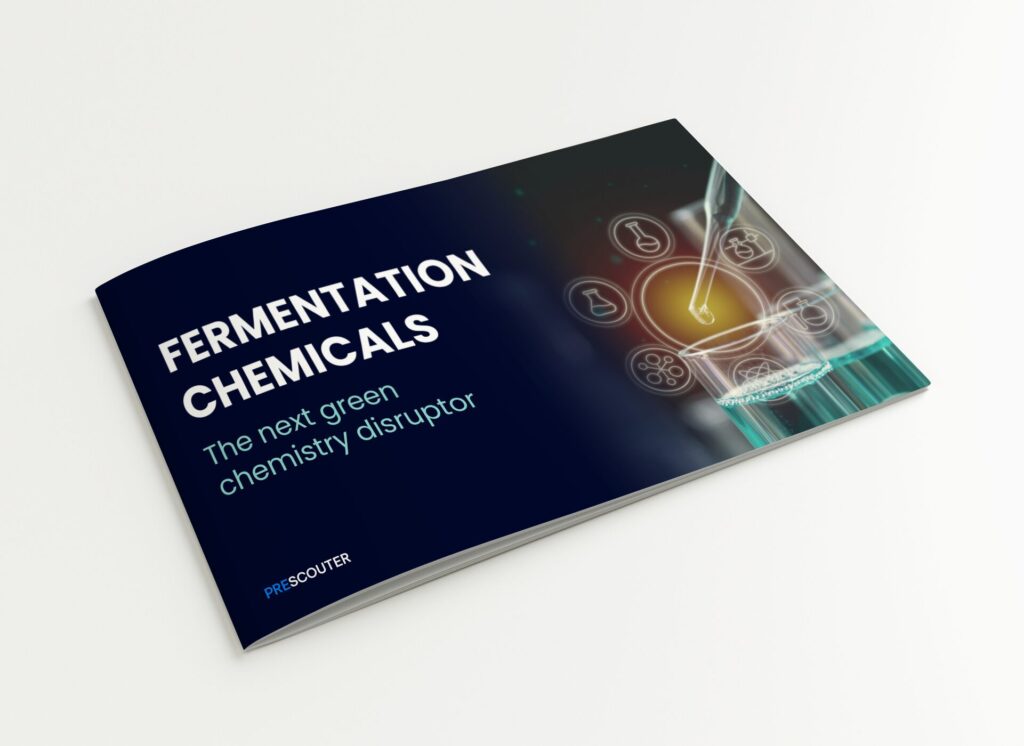Fermentation chemicals are emerging as game changers in the green chemistry sector. While plant-based solutions are often viewed as more sustainable than fossil-based synthetics, there are doubts about their true carbon neutrality. Fermentation processes, in contrast, are simple to implement and bring unique advantages.
These chemicals provide opportunities for customization that are not dependent on seasonal variations or food supply competition. This makes fermentation an appealing method for sustainable chemical production, ready to disrupt the green chemistry sector.
This article explores what fermentation chemicals are, their key benefits and challenges, along with their forecasted market growth.
What are fermentation chemicals?
Fermentation chemicals are biobased products made through the controlled use of microorganisms. These microorganisms, such as bacteria and yeasts, break down biomass to produce various chemicals. This process is part of the broader category of green chemistry, which focuses on sustainable production methods.
Common chemicals from the fermentation process include lactic acid, ethanol, and citric acid. Each of these products of fermentation has diverse uses and applications. For instance, lactic acid is used in food preservation and biodegradable plastics, ethanol in fuels and solvents, and citric acid in cleaning products and cosmetics. The versatile uses of these chemicals underline the potential of fermentation in various industries.
Key advantages over traditional chemical production:
Fermentation chemicals offer a sustainable alternative to traditional methods using biowaste and emissions as feedstock. This allows for the reduction of carbon emissions and makes these processes eco-friendlier. They also don’t rely on seasonal crops, providing a constant supply without competing with food resources.
The versatility of feedstock types for fermentation processes ensures they can be adapted to various industrial needs. This ensures that production can be scaled up without the high environmental costs associated with traditional chemical synthesis. Moreover, these processes can produce high-purity products that are crucial for industries like pharmaceuticals and food.
Fermentation technologies provide a significant long-term cost advantage. While initial setup and scaling might be expensive, the overall reduction in raw material costs and the potential for generating high-value products make it financially viable. This economic efficiency, combined with environmental benefits, positions fermentation chemicals as a key player in the future of green chemistry.
Major challenges in scaling fermentation technologies:
The control and optimization of the fermentation process are crucial yet complex. They require precise adjustments and continual monitoring to ensure product consistency and efficiency. Also, the scale-up process often uncovers issues that weren’t evident during smaller-scale experiments. This includes challenges in maintaining the desired microbial health and productivity across larger bioreactors.
The use of genetically modified organisms (GMOs) leads to regulatory and public acceptance challenges. Every region has different regulations that can slow the approval of GMO-based products. Furthermore, public skepticism towards GMOs can impact market acceptance and penetration.
Financial investments in scaling up fermentation technologies are substantial. The cost of building and maintaining large-scale fermentation facilities can be prohibitive. Moreover, achieving a competitive cost structure compared to petrochemical alternatives remains a daunting task.
Projected market potential:
The fermentation chemicals market is showing rapid growth across several sectors. By 2030, several fermentation-derived products like Bio-1, 4-Butanediol, and PLA are expected to enter billion-dollar markets.
With a compound annual growth rate surpassing 15% for key chemicals, the sector promises significant environmental and economic impacts. This growth is driven by the shift towards sustainable production processes and the rising demand for green chemicals.
Companies like Genomatica, Cargill, and Novozymes are leading the development and commercialization of fermentation chemicals. These firms are using advanced biotechnologies to innovate and expand their product offerings sustainably. Their efforts are crucial in shaping a sustainable chemical industry sector.
Access our intelligence brief for an in-depth understanding of how these major players are using industrial fermentation processes to influence the green chemistry market.








